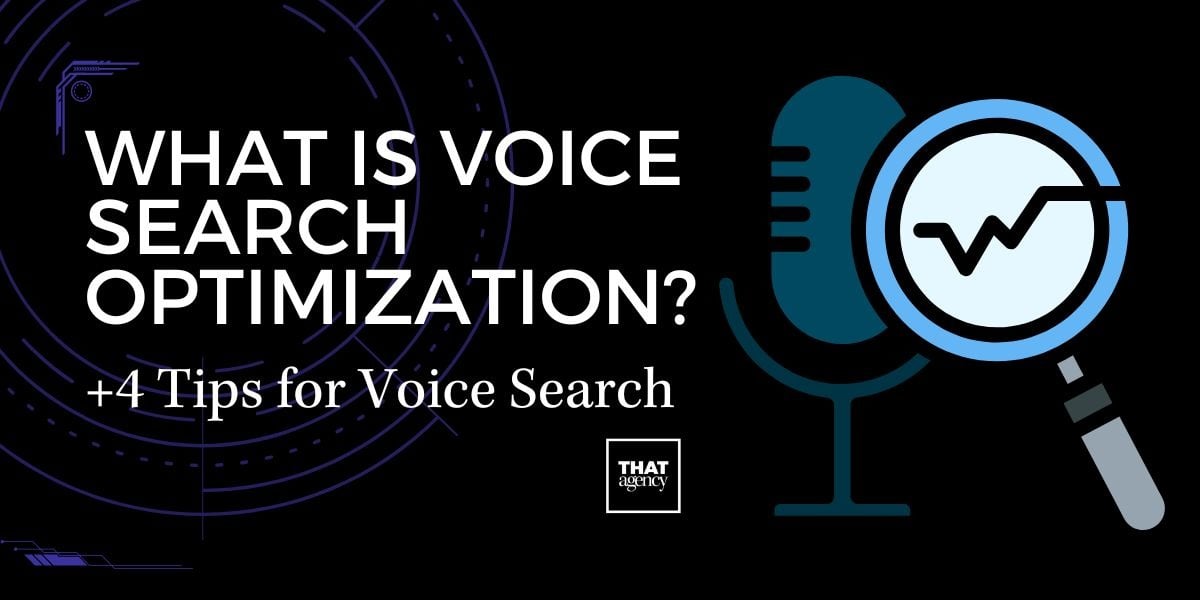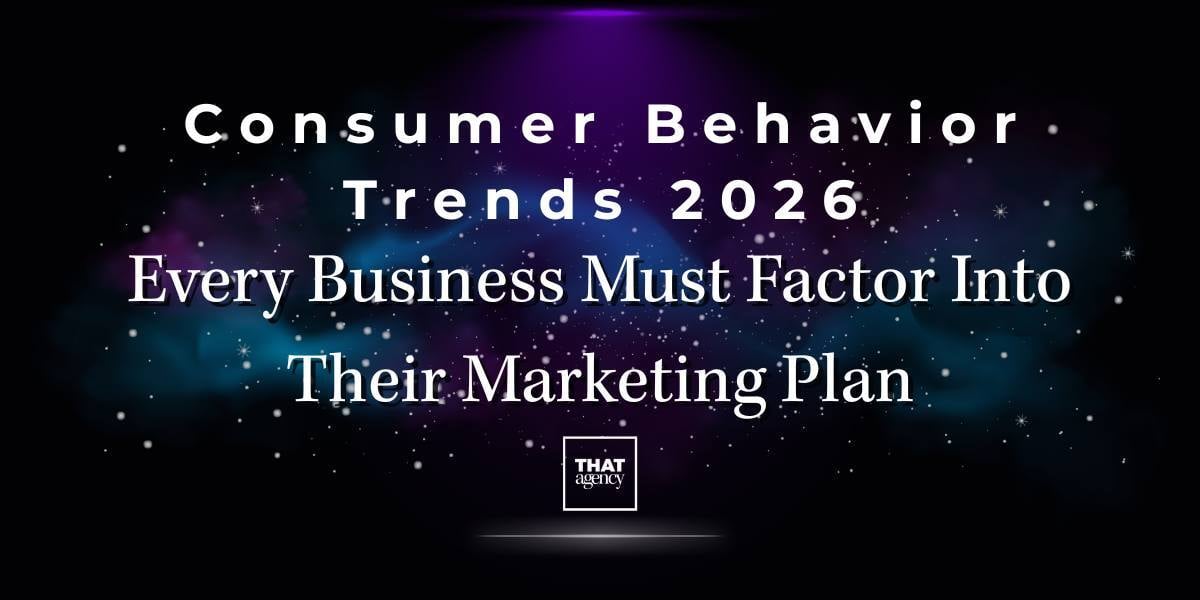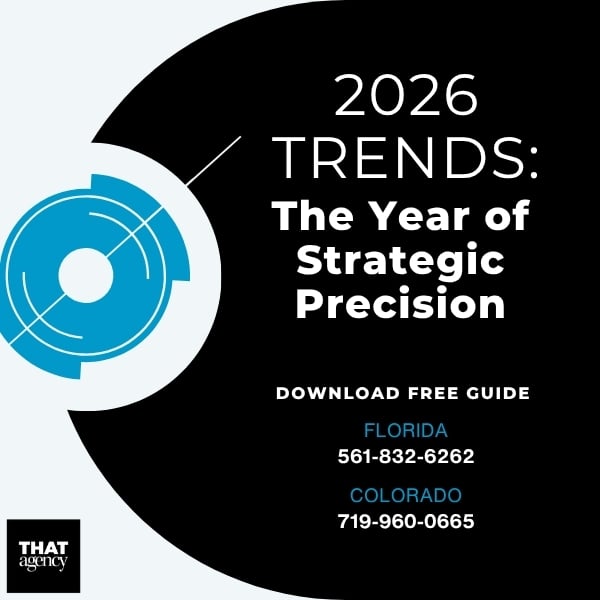If you’re putting time and effort into creating content, you want to know it’s working, right? That’s where content marketing metrics come in. These are the numbers that help you figure out what’s working well, and what needs some work.
At THAT Agency, we help businesses get the most out of their content by tracking the right metrics. In this post, we’re breaking down the 15 content marketing metrics you should keep an eye on if you want to see real results.
Let’s keep it simple: If you’re not tracking your results, you’re just guessing. You might be creating amazing blog posts, videos, or social media content, but without data, you don’t know if that content is actually helping your business.
When you track the right metrics, you can:
Let’s start with one of the easiest content marketing metrics to understand: website traffic. This tells you how many people are visiting your website, and it’s a great way to measure the reach of your content.
You can track website traffic using tools like Google Analytics, which is free and super powerful. It’ll show you things like:
If you're posting blogs, creating landing pages, or sharing content on social media, you want to know that people are actually showing up. If your traffic is going up over time, it usually means your content is reaching more people, which is a good sign that your marketing efforts are paying off.
Low traffic doesn’t mean you’ve failed. It just means there’s room to grow. You might need to:
You can’t improve what you’re not tracking. Website traffic helps you see if your content is attracting visitors, and if not, it gives you a place to start making changes.
Next up is time on page, a simple but super helpful metric. It tells you how long people are staying on a particular page of your site.
Let’s say you publish a blog post that takes about 5 minutes to read. If people are only sticking around for 10 or 15 seconds, they’re probably not reading it. But if the average time is close to 4 or 5 minutes, it means they’re likely reading most of it, or at least skimming through carefully.
This metric helps you figure out:
A few things can impact how long people stay:
The longer people stay, the more likely it is that they’re finding value in what you’ve created.
Bounce rate shows you the percentage of people who visit your site and then leave without clicking on anything else. So if someone lands on your blog and exits right away, that counts as a bounce.
A high bounce rate means people aren’t sticking around to check out more pages. That could be because:
That depends on your industry and the type of content. In general:
Not necessarily! Sometimes a high bounce rate is okay, especially if someone lands on your blog, reads it fully, and then leaves because they got what they needed. But if your goal is to get them to take action, like visit a product page or contact you, then you’ll want to reduce your bounce rate.
Bounce rate tells you whether people are sticking around or leaving right away. If you want your content to drive engagement (or sales), this is a key metric to watch.
Pages per session is a metric that tells you how many pages someone looks at during one visit to your website. For example, if someone lands on your homepage, reads a blog post, and then clicks over to your About or Services page, that’s three pages in one session.
More page views per session usually means the person is:
Think of it this way: when someone walks into a store and browses multiple aisles, it’s a good sign they’re thinking about buying. The same goes for your website.
There’s no one-size-fits-all answer, but generally:
Here are a few tips:
The goal is to keep the conversation going. The more time people spend on your site, the more likely they are to become a lead or customer.
Organic search traffic refers to the people who find your website through a search engine, like Google, without clicking on a paid ad. If someone types “best web design agency in Florida” and finds your blog or service page in the results, that’s organic traffic.
Organic search traffic is one of the best ways to measure content marketing success. It means your content is working hard for you, showing up when people search for topics related to your business.
Use tools like:
If you’re not getting much search traffic yet, don’t worry, this is where SEO (search engine optimization) comes in. Improving things like keyword use, page speed, and content quality can help boost your rankings and bring more traffic your way over time.
When someone searches for something on Google, they usually don’t scroll very far. That’s why your keyword rankings, or where your site shows up in search results, are so important.
It’s your spot on Google (or other search engines) for a specific search term. For example:
Because they help you:
Use tools like:
If your content isn’t ranking yet, don’t get discouraged. Here’s what you can do:
Improving your keyword rankings helps more people find your site, which leads to more traffic, and ultimately more leads or customers.
Click-through rate (CTR) is a simple but powerful metric. It tells you how often people click on your content after they see it. You can measure CTR for things like:
For example, if 100 people see your blog post title in a Google search and 10 people click on it, your CTR is 10%.
CTR shows you whether your content is grabbing attention and encouraging people to take the next step. If your titles, headlines, or descriptions aren’t exciting or clear, people might scroll right past them, even if the content itself is amazing.
It depends on where your content is appearing. A good CTR on:
The more competitive the platform, the lower the CTR usually is, but small changes can make a big difference.
Here are some easy ways to boost it:
CTR is your first clue that something is working, because if nobody’s clicking, they’re definitely not reading.
Conversion rate is one of the most important content marketing metrics because it shows how often people do what you want them to do. A “conversion” could be:
Basically, it’s the step that turns a visitor into a lead, or even a customer.
Let’s say 1,000 people read your blog. That’s great! But if only 1 of them fills out your contact form, your conversion rate is 0.1%. Now let’s say you update your blog to include a better call to action (CTA), and 20 people convert instead. That’s a 2% conversion rate, a huge improvement.
Tracking conversions helps you see:
It depends on your goal and industry, but here are some general benchmarks:
If your content is bringing in visitors and getting them to take action, it’s doing exactly what it should.
Social shares happen when someone shares your blog post, video, or article on a platform like Facebook, X (formerly Twitter), LinkedIn, or Instagram. This is a sign that they found it helpful, interesting, or entertaining enough to show it to others.
Social shares can:
Think of shares as word-of-mouth marketing in the digital world. If people are sharing your content, you’re making an impact.
While shares might not always lead to conversions right away, they help you build brand awareness and reach people who might not find you otherwise.
When people comment on your blog posts or social media, whether they’re asking questions, sharing their thoughts, or tagging friends, it’s a sign that your content is truly connecting with them. This kind of interaction is called engagement, and it’s a key signal that your content isn’t just being seen, it’s being felt.
Engagement shows that your content is starting a conversation. It means people care enough to stop scrolling and get involved. And in the world of digital marketing, that’s a big deal.
Engaged users are more likely to:
No comments doesn’t always mean your content isn’t working, but it could be a sign you need to tweak things. Try:
The more you connect with your audience, the more trust you build, and engagement is a great first step.
A backlink is when another website links to a page on your site. Think of it like this: every backlink is a little vote of confidence from the internet. It’s like someone saying, “Hey, this content is good, you should check it out.”
Backlinks help with two big things:
Not all backlinks are created equal. A backlink from a well-known, reputable site is worth more than one from a random blog or spammy directory. Quality backlinks come from:
If others are linking to your content, it’s a strong sign you’re doing something right.
If you send out newsletters or marketing emails, tracking email engagement helps you understand what your audience actually wants to see. The three main things to keep an eye on are:
Let’s say you send out a new blog post in an email:
These can vary by industry, but here’s a rough guide:
Email is one of the few marketing tools you truly own, so keeping your list engaged is a big part of content success.
Creating content, whether it’s blog posts, videos, infographics, or email campaigns, takes time, energy, and money. So, how do you know if it’s worth it? That’s where ROI, or Return on Investment, comes in.
Content ROI tells you how much value your content is bringing in compared to what you spent creating it. In simple terms:
Is the content helping your business grow, through leads, sales, or brand awareness, more than it’s costing you to make it?
Let’s say you spend $500 creating a blog post and another $100 promoting it. That’s a $600 investment. If that post brings in a $2,000 sale or a bunch of qualified leads, that’s a great return.
Tracking ROI helps you:
There’s a simple formula:
(Return – Investment) ÷ Investment × 100 = ROI %
For example, if a blog generates $2,000 in revenue and cost $600 to create:
($2,000 – $600) ÷ $600 = 2.33 or 233% ROI
Not every piece of content leads to instant money, but it can still be valuable. Some content builds trust, gets shared, or keeps people coming back. That’s part of your long-term ROI, and it’s just as important.
Getting leads is exciting, but getting the right leads is what really matters.
Lead quality refers to how well a lead (someone who contacts you or fills out a form) matches your ideal customer. A high-quality lead is someone who:
On the other hand, a low-quality lead might not be in your service area, can’t afford your products, or is just browsing without serious interest.
If your inbox is full of leads you can’t work with, you’re wasting time following up on bad fits. That’s frustrating, and it’s a sign your content might be attracting the wrong audience.
Let’s say you’re a web design agency. A blog post titled “What to Look for in a Custom Website Partner” will probably attract business owners, whereas a general post like “What Is a Website?” might attract students or people just learning.
In short, quality beats quantity when it comes to leads.
Not all content works the same way. Some pieces get a spike of traffic right after publishing, and then fade out. Others take time to grow but keep bringing in traffic, leads, or engagement for months or even years.
This is called long-term performance, and it’s one of the most powerful parts of content marketing.
Evergreen content is content that stays relevant over time. It keeps showing up in search results and continues to help people long after you’ve published it. Examples include:
Why should I care about long-term content performance? Because it saves you time and money in the long run. If one blog post keeps bringing in traffic every month, that’s content that continues to work for you, even while you sleep.
How do you track it? Check Google Analytics or your website data to see:
If you find content that performs well over time, make more of it! These are your quiet MVPs, always working behind the scenes.
So, you’ve been creating blogs, videos, or social media posts, but how do you know if it’s all actually working? That’s where measuring comes in. Tracking the right numbers (called metrics) helps you understand what’s helping your business grow, and what’s not.
But don’t worry. Measuring content marketing doesn’t have to be complicated. Let’s break it down step by step.
Before you look at a single number, ask yourself: “What am I trying to achieve with my content?”
Different goals call for different metrics. For example:
Your goals should guide everything else. They help you focus on what really matters instead of getting distracted by numbers that don’t support your main objectives.
Once you’ve got your goals in place, it’s time to pick the right tools to measure your progress. Here are some of the most popular (and helpful) tools that marketers use:
What it does: Tracks how many people visit your website, how long they stay, what pages they view, and whether they complete actions like filling out a form or clicking a CTA.
Why it’s helpful: It shows what content gets the most traffic and how people behave on your site, perfect for measuring content performance over time.
What it does: Shows you how your content ranks in Google search results, which keywords people used to find you, and how often your pages are clicked on.
Why it’s helpful: It gives you a window into what’s working in terms of SEO (search engine optimization), and helps you spot areas to improve.
What they do: Track keyword rankings, backlinks, domain authority, and your competition’s content performance.
Why they’re helpful: If you want to improve search rankings or see who’s linking to your content, these tools give you in-depth insights you can’t get elsewhere.
What they do: These platforms track how your emails are performing, open rates, click-through rates (CTR), unsubscribe rates, and more.
Why they’re helpful: They help you see what kind of email content your audience likes (or doesn’t), so you can send better emails in the future.
What they do: These tools track likes, shares, comments, and more across your social media platforms.
Why they’re helpful: They give you a full picture of how your content is performing on Instagram, Facebook, LinkedIn, and beyond, all in one place.
You don’t need to track every single metric right away. That can get overwhelming, and honestly, not every metric matters to every business.
Start by picking 3–5 key metrics that match your main goals. For example:
As your strategy grows, you can always add more metrics to your dashboard.
Checking your numbers once in a while isn’t enough, you need to track them consistently to spot trends, identify what’s working, and make smart improvements.
And remember, don’t panic if you don’t see instant results. Some content takes time to build momentum. Keep testing, learning, and adjusting as you go.
Tracking content marketing metrics helps you see what’s working, what’s not, and what you should do next. Without data, you’re just taking shots in the dark. But with the right numbers in hand, you can make smart moves and keep improving.
Want help building a content strategy that’s backed by data and built for results? Check out our content marketing services or contact THAT Agency today. Let’s make sure your content is working for you.

What are Zero Click Searches and How Do They Impact Your Business?

What is Voice Search Optimization? +4 Tips for Voice Search

Leveraging Predictive Analytics Marketing for Smarter Decisions

Consumer Behavior Trends 2026 Every Business Must Factor Into Their Marketing Plan
.jpg)
AI Image Generation for Marketers: What’s Possible and What to Avoid
700 S. Rosemary Ave.
Suite 204-707
West Palm Beach, FL 33401
P: 561.832.6262
F: 561.832.7707

